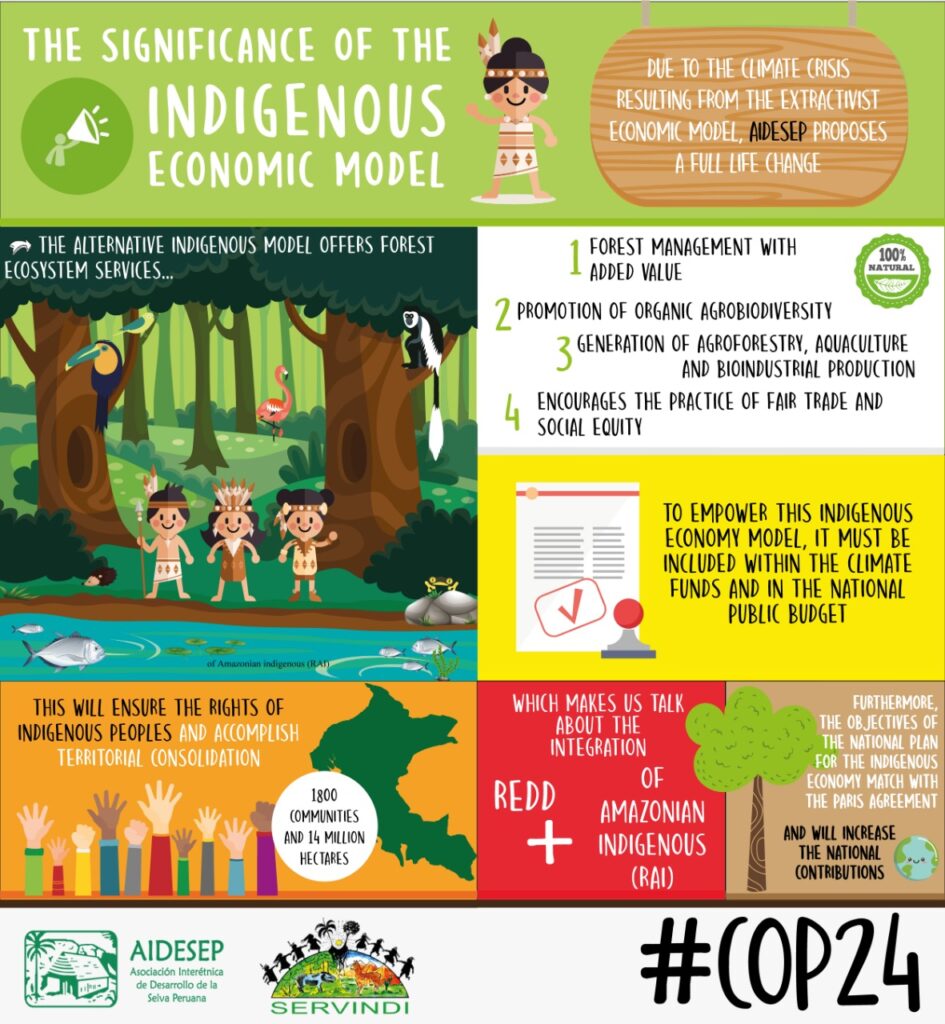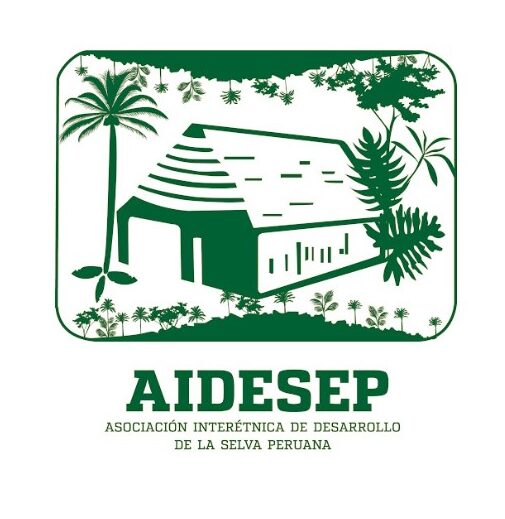The Amazon delegation of AIDESEP in the COP24 supports the importance of impulsing the indigenous economics as an alternative model face to the climat crisis, which is a consequence of the extractivist economic model.
The amazon indigenous peoples arrived to Katowice to inform, from their perspective, how to face climate change throughout practices of indigenous full-life economy, which is an alternative model that faces the prevailing consumist economy.
What does the model supported at COP24 by the Interethnic Association for the Development of the Peruvian Rainforest (AIDESEP) proposes?
To begin with, it should be pointed out that the climate crisis currently affecting the planet is based on an economic model that encourages agribusiness, hydrocarbons, mining, logging, among other destructive practices that are destructive to the Amazon and its peoples.
Proposals of the indigenous full-life economy
The alternative indigenous model has made proposals such as forest management, offering forest ecosystem services that include timber management with added value and certification.
Likewise, it also promotes organic agrobiodiversity, as well as agroforestry, aquaculture and bioindustrial production, generating a permanent productive diversification.
In return, these practices generate a retribution for the ecosystem services of the forest that is concerned with an equitable benefit among its different actors, encouraging the fair trade practice.
However, to strengthen this model, the indigenous economy must still be considered within the climate funds.
To this end, the generation of proposals for legislation is also aimed. This would convert it into a public policy included in the national public budget.
“The change of the economic model is one of the great challenges for the Amazon,” said AIDESEP leader Delfina Catip.
It should be noted that the indigenous full-life economy aims to satisfy needs that translate into a higher quality of life for indigenous peoples.
Conditions for the indigenous economy
However, it is essential to make progress in consolidating the collective and citizen rights of indigenous peoples, which is why it seeks to ensure these rights.
Likewise, it is still pending to solve socio-environmental conflicts based on sanitation and territorial consolidation.
Redd + Indigenous Amazon (RIA)
On the other hand, integration between the Redd + Indigenous Amazon (RIA) and the indigenous full-life economy is proposed, concentrating these actions in 12 territories with four million hectares.
Likewise, the components of the National Plan of Indigenous Full-Life Economy promoted by AIDESEP also link with several objectives of the Paris Agreement.
Thus, we can highlight the relationship between the indigenous full-life economy and climate ambition. This model, based on a holistic and integrated management of the territory and productive diversification, demonstrates greater coherence with respect to compliance with the National Determined Contributions (NDC).
The latter is very clear to the indigenous peoples: it is impossible to comply with the NDC without an economy that takes care of the forests and present added value.
However, even beyond the economic, looking at the forests differently is a call for the survival not only of indigenous peoples, but of humanity.
About AIDESEP
AIDESEP is the spokesperson organization of the Amazonian indigenous peoples of Peru. It is made up of nine regional organizations, 109 federations that in turn represent 1809 native communities.
At the international level, AIDESEP is part of the Coordinator of Indigenous Organizations of the Amazon River Basin (COICA).

Contact information at COP 24:
Leon Meyer zu Ermgassen: leon@eifelgrund.de/ +49 17692475009
Website: www.aidesep.org

